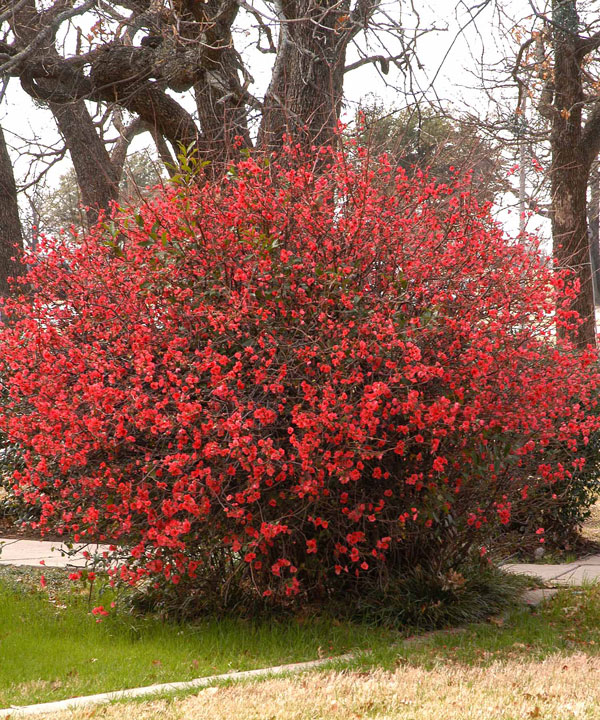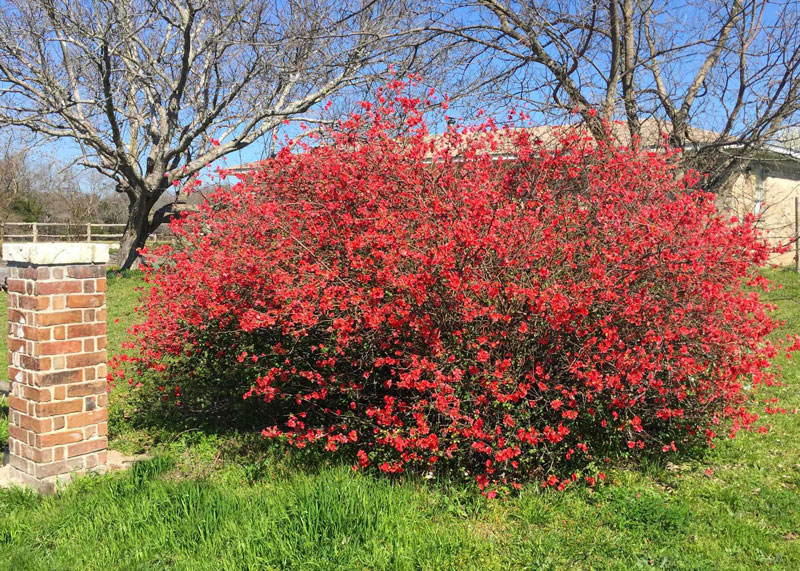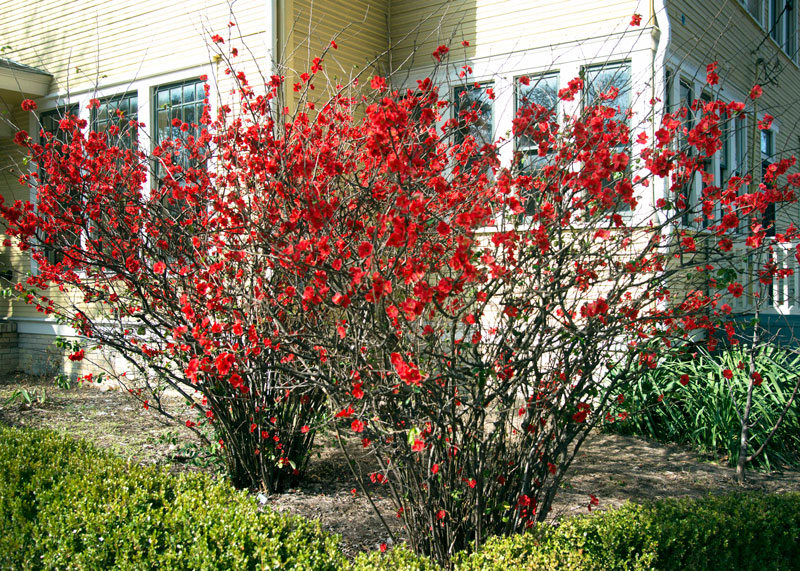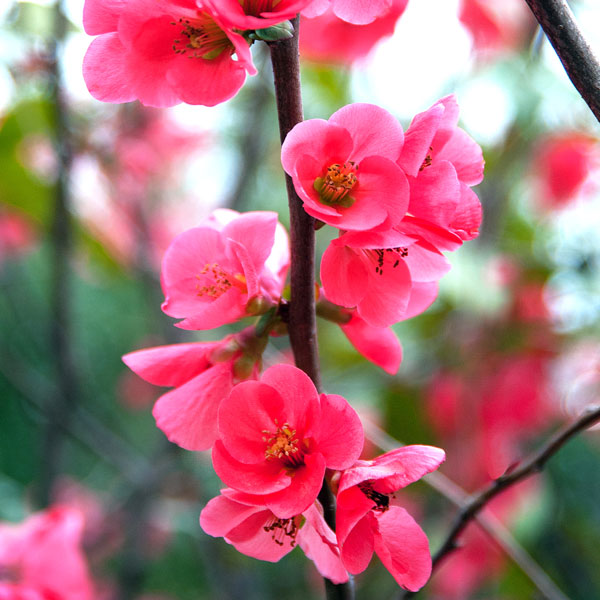Flowering Quince Marks the Beginning

This venerable old shrub, a favorite of our grandmothers’ grandmothers, was once known by Texans as “japonica.” Many still use that name when they see it growing in older neighborhoods or even around abandoned homesites of rural properties.

Flowering quince is a durable old thing, easy to miss when it’s not flowering, but shining forth like it’s on fire when it’s in bloom. That time is here now in South Texas or quickly approaching farther north, so I thought we might share a few thoughts in case you’d consider adding one to your estate grounds this spring.

What you’ll want to know about flowering quince…
Scientific name: Chaenomeles speciosa
Common name: Flowering quince
Plant family: Rosaceae
Native home: China, Japan
Hardiness: U.S.D.A. Zones 4-8
Height, width: 5-6 ft., 4-5 ft.
(dwarf cultivars are also available)
Sun/Shade: Partial shade to full sun. Does best with morning sun, afternoon shade.
Soil preference: Clay or garden loam, well-draining
Flowers: Single to double rows of petals; red, pink, white, salmon, orange-red; not fragrant. Good pollinator plant. Dormant stems with swelling buds can be pruned in late winter, brought into the house in a vase of water and “forced” into bloom on a warm windowsill.
Leaves: Dark green, deciduous. May show iron deficiency in highly alkaline soils.
Stems: Brown, slender, often congested and sometimes spiny. Stems can be attractive in floral design.
Fruit: Occasionally, yellowish green, resembling an apple. Can be used for jellies.
General comment: Plant is very showy while blooming, but ordinary when not in flower. Therefore, it is best used toward the back of the landscape to be viewed from a distance or 7-8 ft. back from a long drive or walk rather than near an entry or patio.
Propagation: Stem cuttings, but sprouts may be dug and transplanted on occasion.
General note: This plant is very showy while it’s in full bloom. If you really want one you’ll need to keep your eyes open at your local garden center. When a delivery arrives the plants generally sell out very quickly. You might even ask ahead of time that one be reserved for you.

